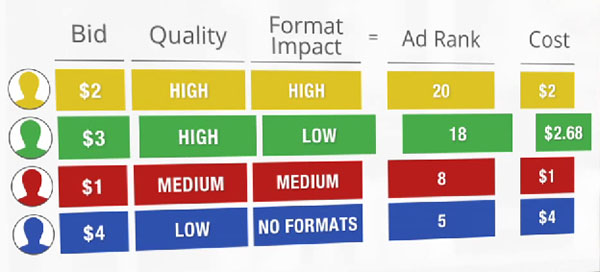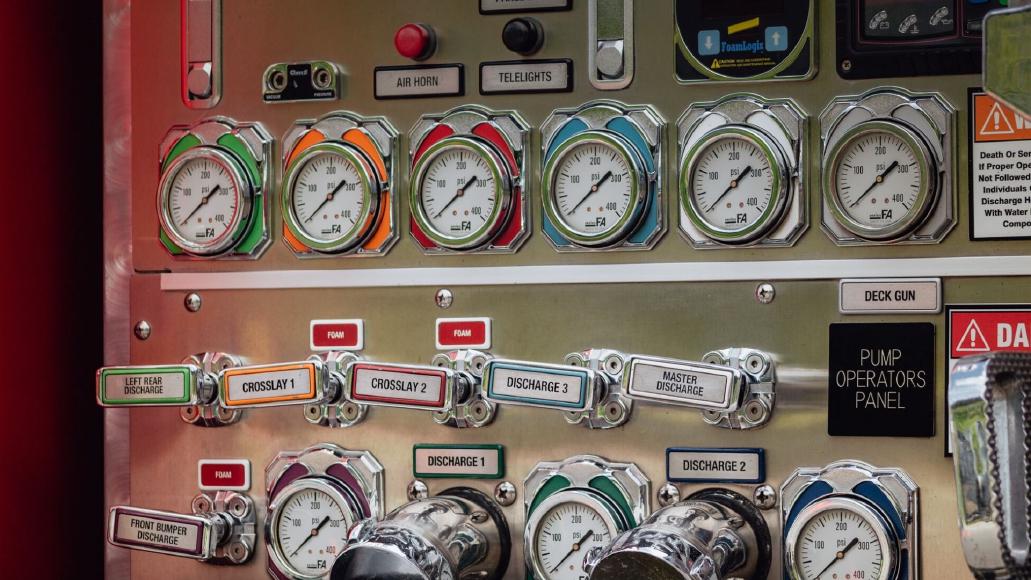KPIs, or Key Performance Indicators, are metrics which can used to measure the output of something. In our world, we use them to measure the output of a marketing campaign and if used correctly, it should provide a quick snapshot reflecting the campaigns health.
Thoroughly understanding Key Performance Indicators of campaign performance is really essential for anyone working in PPC. The goal of every single PPC campaign should be directly correlated to a different KPIs – ideally, during the campaign planning phase.
“Measuring the output of your campaign is crucial if you’re keen to make sure you’re getting a good return for money spent.”
Understanding what your campaign is designed to achieve is a crucial element but so is being able to measure it in a simple and understandable way. After all, what’s the point of running a campaign if you can’t then see if it was a success or a failure?
Correct measurement of your campaign performance is really the only way to demonstrate ROI both to your clients (if you have some) or to your employer.
Here are the 5 Most important PPC KPIs to use.
1. CLICKS
All of the conversions we look at start with a click. Clicks are the ignition to everything which proceeds it. This is why clicks are an early indicator of PPC campaign success. This particular KPI measures how many people clicked on your advert.
Campaign managers often check in on accounts throughout the month to pause ads that are not performing and even increase the bids on ads that are. Clicks are a great KPI for that mid-month account performance checkup but clicks don’t show if a campaign is successful – they simply show that they are active.
2. Click-Through-Rate or CTR
Rather than just measuring how many people click on your campaign, you can also measure how many clicks you experienced vs how many times your advert was shown.
CTR = # of Clicks / # of Impressions
This equation could tell you that out of 1,000 impressions, your ad was clicked 100 times and your subsequent CTR is 10% for example.
Understanding what CTR is and how to measure it is key to being able to indicate your performance. Like most things within digital marketing, there is no perfect number to strive for – instead, you should seek the highest CTR by experimenting with search terms and ad copy, continuously month-to-month.
PPC performance varies by industry and a number of other campaign variables. The folks over at WordStream analyzed the PPC performance on just over 2,000 U.S businesses and found that the average CTR in search was 2.14% in the Auto industry but 3.40% in the dating and personals industry. Campaign managers running campaigns in the U.S could use the numbers reported by WordStream to benchmark their own CTR success but should be wary of other variables not accounted for in the analysis like budget spend.
Benchmarking and improving the CTR of different campaigns is important not just as a measure of success but also because it can affect other KPIs like Cost-Per-Click.
3. Cost Per Click (CPC)
Advertisers of PPC know how much they can pay for an ad campaign because they typically have predetermined budgets. Even if they have a budget and a bid when doing the setup of a PPC campaign, it doesn’t mean that this is what they will pay. Advertisers outcompete competitors for ad positions with their bid but pay the net highest bid price.

Google ads diagram bid example
The cost of putting up an ad and for the clicks it generates is largely determined by other competitors in the PPC auction.
CPC measures exactly how much advertisers have paid. You can measure CPC by dividing that total cost of a campaign by the number of times the ad was clicked in that campaign.
If you wanted to calculate this by-hand, you could divide the total cost of a campaign by the number of clicks a campaign experienced.
4. Conversion Rate (CVR)
PPC marketers are typically hired for a lot of reasons but at the core, it’s always related to the Conversion Rate.
In Google Ads, you can calculate the conversion rate by simply dividing the number of conversions the campaign experienced by the total clicks. Since the conversion rate is expressed as a percentage, if the campaign had 100 clicks and 10 conversions, 10/100 means that the conversion rate would be 10 percent.
Whilst campaign managers always have an eye on conversions, they will often set up campaigns to optimize for clicks rather than conversions.
In Google Ads, you can now target CPA conversions based upon CPA goals – rather than concentrating on clicks or impressions. As the Google machine learning will need a bit of data before it can perform this rather complex bidding strategy, a minimum of 15 conversions must have occurred on your account within the last 30 days.
5. Lifetime Value
Lifetime Value or LTV for short, is a broad indicator of account health and of a PPC marketers’ ability.
Calculating LTV is complex but hugely valuable. Companies that retain customers acquired via paid search longer will make significantly more revenue. As the LTV is a measurement of a business’s customers lifetime with their product or service, it can be measured in many different ways.
For example, in the case of a software subscription business the LTV could be measured simply by looking at the number of days, months or years a client stayed with the platform and then calculating how many fees were paid during that period.
In the case of a large company like Starbucks, the LTV can be rather complex. As there are so many considerations (e.g. Average customer lifespan customer retention rate, profit margin per customer and applied discounts).
Usually a PPC marketer wouldn’t take on a complex calculation like Starbucks but they would need to be mindful of how the LTV would be calculated as it would feed into how the campaign is structured, how bids are set and what search terms are targeted. Fundamentally, LTV means the same thing to most PPC marketers but it may be wrapped up and described differently. Key thing to bear in mind, is that the LTV should reflect the revenue generated from the customer generated through PPC – and remember, it’s the revenue from all interactions from the point of acquisition.
Reporting on PPC KPIs can be tricky
KPIs are not mutually exclusive. Taking a look at a single KPI is not advisable because it doesn’t give you a broad enough picture to make a decision. Informed decisions will create the biggest impact and to achieve a good level of understanding, combining KPIs is crucial.
Improving CTR can positively impact Quality Score and improving Quality Score can positively impact Cost Per Click and Cost Per Acquisition but without reviewing each of these KPIs it’s difficult to witness.
Bearing this in mind, it’s important that all advertisers begin to improve their performance at the level of clicks, whilst also making sure to not get caught up in one single number and remembering to take a step back and look at KPIs that paint a more complete picture, like LTV.
Reporting on every available KPI is probably not feasible for any marketer. Instead, KPIs should be assigned to a campaign based upon the goals of the campaign – really, what makes the most sense for the client and its ambitions.
Use KPIs to answer questions you have regarding your campaign. Say, you’re running a campaign and you’d like to understand how popular the adverts are. You’d probably want to look at Clicks and CTR, as this would tell you how accurate your search terms are and how well your adverts resonate with your target audience. If you want to better understand how visitors are interacting with your Landing Pages, perhaps you want to take a look at Conversions and Bounce Rates. It really does depend upon the answers you’re looking for or the perspective you want to get a grasp of.


